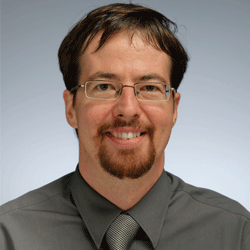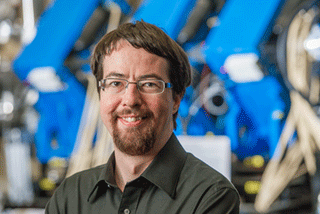
Maxime Brodeur, the Ortenzio Family Assistant Professor in Applied Medical and Nuclear Physics, conducts basic research in nuclear physics that holds promising potential for medical applications.

His research aims to improve our understanding of both the Standard Model of particle physics and how heavy elements in the universe were formed through precision measurements of atomic mass and decay properties of exotic nuclei. Results from his studies could also lead to a more precise understanding of heat generation in nuclear fission, enabling construction of more efficient and economical reactors.
Brodeur, who utilizes ion trapping techniques for his research, has completed the construction of an ion trap that employs electric fields to capture charged particles. He is preparing to test the technology. “The equipment will be used to prepare pure radioactive ion beams for decay spectroscopy experiments and to conduct high-precision mass spectrometry,” he says. “One possible medical application of such a device is that it could enable clinicians to identify whether particular tissues are cancerous, an important tool for diagnosing and treating cancer.”
“Prof. Brodeur is a rising star in the field of nuclear physics and its applications, and we’re extremely pleased that he was named the Ortenzio Family Assistant Professor,” said Chris Kolda, the chair of the Department of Physics. “The nuclear physics program at Notre Dame is one of the best in the world, and it is young faculty like Prof. Brodeur who are the key to maintaining that tradition of excellence. We are especially grateful to the Ortenzio family for their generosity in supporting Prof. Brodeur and our world-class nuclear physics program."
“What attracted me to Notre Dame was the high-quality research that the nuclear group was doing here,” Brodeur says. Brodeur, who focused on precision mass spectrometry when he earned a Ph.D. in nuclear physics from the University of British Columbia in Vancouver, Canada, also conducted postdoctoral research at Michigan State University. He joined Notre Dame in the summer of 2013.